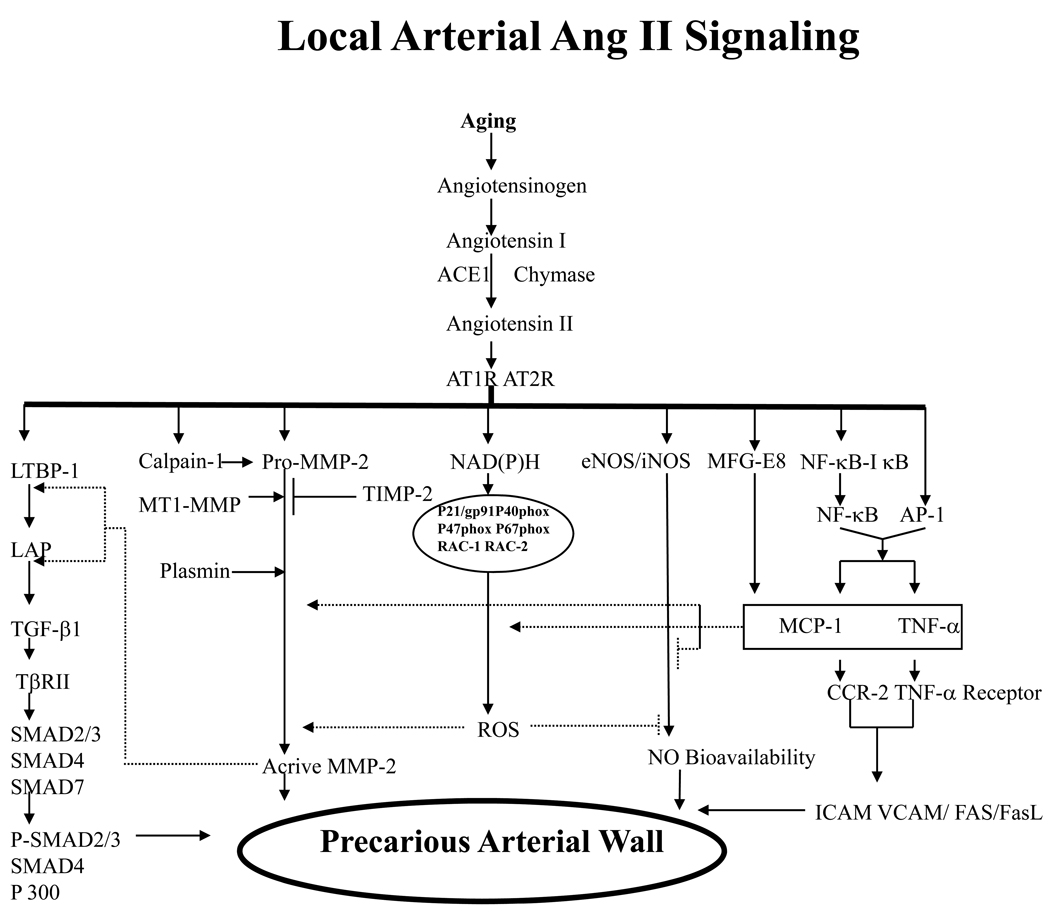Figure 3.
Simplified schematic of the pleiotropic roles of increased Ang II signaling on arterial vulnerability. An age-associated increase in Ang II induces TGF-β expression, activates the nuclear factor κB (NF-κB) and MMP systems, promotes reactive oxygen species (ROS) production, and decreases NO bioavailability, contributing to arterial inflammation and fibrosis and resulting in arterial remodeling. ACE indicates angiotensin-converting enzyme; AT1R, Ang II type 1 receptor; LTBP, latent TGF-binding proteins; LAP, latency-associated protein; TβRII, transforming growth factor β receptor type II; VCAM, vascular cell adhesion molecule; FasL, Fas-Fas ligand; SMAD, similar to mother against decapentaplegic; TIMP; tissue inhibitors of metalloproteinases; MT1, membrane type 1; MFG-E8, milk fat globular epiderminal growth factor-8, MFG-E8. Modified from Wang M et al [52].

